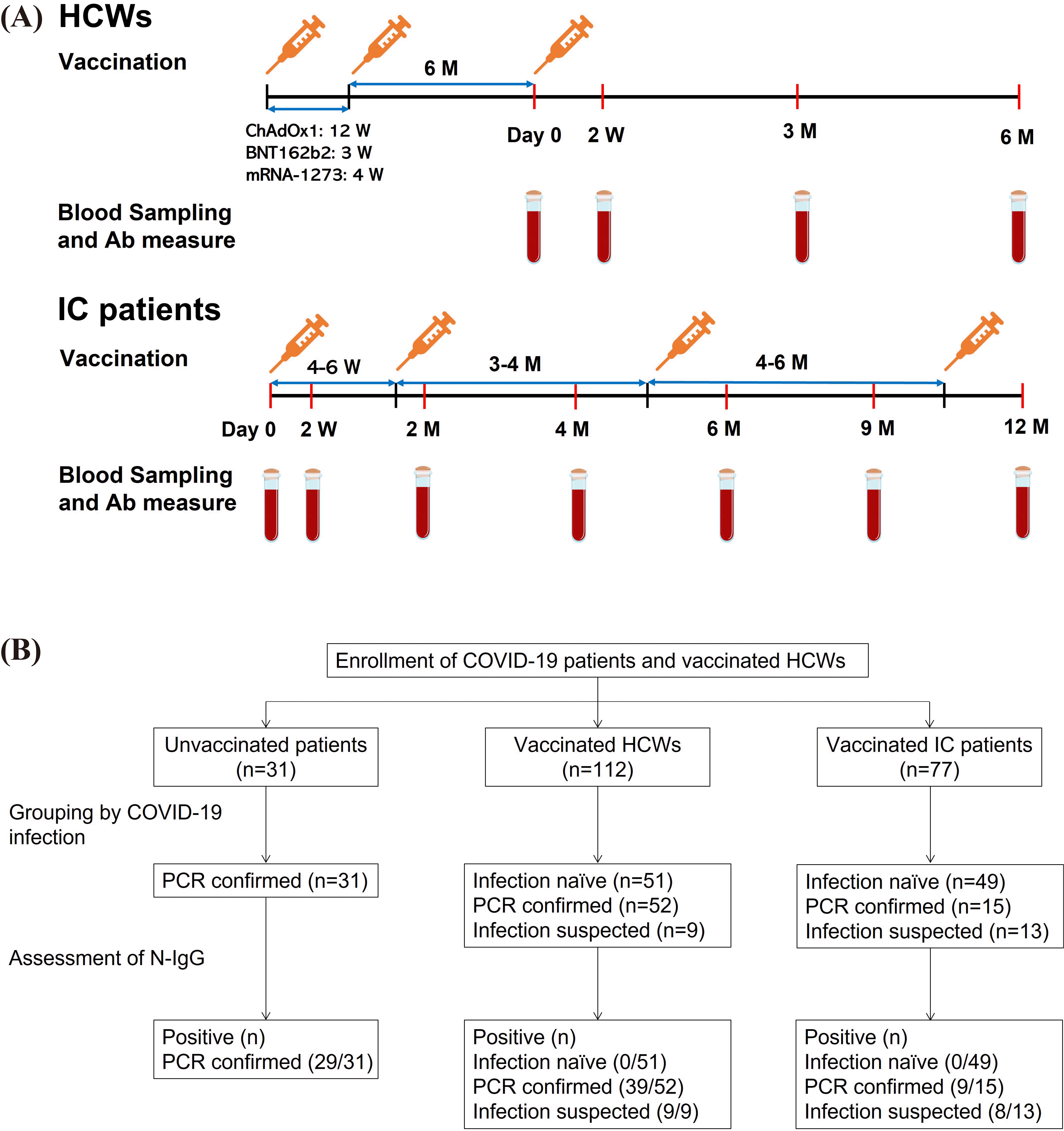1. Smits VAJ, Hernández-Carralero E, Paz-Cabrera MC, Cabrera E, Hernández-Reyes Y, Hernández-Fernaud JR, et al. 2021; The Nucleocapsid protein triggers the main humoral immune response in COVID-19 patients. Biochem Biophys Res Commun. 543:45–9. DOI:
10.1016/j.bbrc.2021.01.073. PMID:
33515911. PMCID:
PMC7825866.

2. Lin L, Luo S, Qin R, Yang M, Wang X, Yang Q, et al. 2020; Long-term infection of SARS-CoV-2 changed the body's immune status. Clin Immunol. 218:108524. DOI:
10.1016/j.clim.2020.108524. PMID:
32659373. PMCID:
PMC7351676.

3. Šimánek V, Pecen L, Řezáčková H, Topolčan O, Fajfrlík K, Sedláček D, et al. 2021; Long-term monitoring of the antibody response to a SARS-CoV-2 infection. Diagnostics (Basel). 11:1915. DOI:
10.3390/diagnostics11101915. PMID:
34679613. PMCID:
PMC8534661.

4. Gallais F, Gantner P, Bruel T, Velay A, Planas D, Wendling MJ, et al. 2021; Evolution of antibody responses up to 13 months after SARS-CoV-2 infection and risk of reinfection. EBioMedicine. 71:103561. DOI:
10.1016/j.ebiom.2021.103561. PMID:
34455390. PMCID:
PMC8390300.

5. Follmann D, Janes HE, Buhule OD, Zhou H, Girard B, Marks K, et al. 2022; Antinucleocapsid antibodies after SARS-CoV-2 infection in the blinded phase of the randomized, placebo-controlled mRNA-1273 COVID-19 vaccine efficacy clinical trial. Ann Intern Med. 175:1258–65. DOI:
10.7326/M22-1300. PMID:
35785530. PMCID:
PMC9258784.

8. Kim JY, Kwon JS, Bae S, Cha HH, Lim JS, Kim MC, et al. 2021; SARS-CoV-2-specific antibody and T cell response kinetics according to symptom severity. Am J Trop Med Hyg. 105:395–400. DOI:
10.4269/ajtmh.20-1594. PMID:
34143752. PMCID:
PMC8437179.

9. Kim JY, Lim SY, Park S, Kwon JS, Bae S, Park JY, et al. 2022; Immune responses to the ChAdOx1 nCoV-19 and BNT162b2 vaccines and to natural coronavirus disease 2019 infections over a 3-month period. J Infect Dis. 225:777–84. DOI:
10.1093/infdis/jiab579. PMID:
34850034. PMCID:
PMC8767884.

10. Lee SM, Kim IS, Lim S, Lee SJ, Kim WJ, Shin KH, et al. 2021; Comparison of serologic response of hospitalized COVID-19 patients using 8 immunoassays. J Korean Med Sci. 36:e64. DOI:
10.3346/jkms.2021.36.e64. PMID:
33686810. PMCID:
PMC7940118.

11. Yang L, Xu Q, Yang B, Li J, Dong R, Da J, et al. 2021; IgG antibody titers against SARS-CoV-2 nucleocapsid protein correlate with the severity of COVID-19 patients. BMC Microbiol. 21:351. DOI:
10.1186/s12866-021-02401-0. PMID:
34922455. PMCID:
PMC8683808.

12. Feikin DR, Higdon MM, Abu-Raddad LJ, Andrews N, Araos R, Goldberg Y, et al. 2022; Duration of effectiveness of vaccines against SARS-CoV-2 infection and COVID-19 disease: results of a systematic review and meta-regression. Lancet. 399:924–44. DOI:
10.1016/S0140-6736(22)00152-0. PMID:
35202601. PMCID:
PMC8863502.

13. Kim JA, Kim YY, Kim RK, Lee SJ, Park YJ, Yeom HS, et al. 2021; COVID -19 vaccine effectiveness on severity and death from May 2021 to July 2021. Public Health Wkly Rep. 14:2612–5.
14. Guthmiller JJ, Stovicek O, Wang J, Changrob S, Li L, Halfmann P, et al. 2021; SARS-CoV-2 infection severity is linked to superior humoral immunity against the spike. mBio. 12:e02940–20. DOI:
10.1128/mBio.02940-20. PMID:
33468695. PMCID:
PMC7845638.

15. Sughayer MA, Souan L, Abu Alhowr MM, Al Rimawi D, Siag M, Albadr S, et al. 2022; Comparison of the effectiveness and duration of anti-RBD SARS-CoV-2 IgG antibody response between different types of vaccines: implications for vaccine strategies. Vaccine. 40:2841–7. DOI:
10.1016/j.vaccine.2022.03.069. PMID:
35397946. PMCID:
PMC8971065.

16. Allen N, Brady M, Martin AIC, Domegan L, Walsh C, Doherty L, et al. 2021; Serological markers of SARS-CoV-2 infection; anti-nucleocapsid antibody positivity may not be the ideal marker of natural infection in vaccinated individuals. J Infect. 83:e9–10. DOI:
10.1016/j.jinf.2021.08.012. PMID:
34384812. PMCID:
PMC8351117.

17. Jung J, Kim JY, Kwon JS, Yun SC, Kim SH. 2022; Comparison of waning immunity between booster vaccination and 2-dose vaccination with BNT162b2. Immune Netw. 22:e31. DOI:
10.4110/in.2022.22.e31. PMID:
36081526. PMCID:
PMC9433190.

19. Søraas A, Grødeland G, Granerud BK, Ueland T, Lind A, Fevang B, et al. 2022; Breakthrough infections with the omicron and delta variants of SARS-CoV-2 result in similar re-activation of vaccine-induced immunity. Front Immunol. 13:964525. DOI:
10.3389/fimmu.2022.964525. PMID:
36159859. PMCID:
PMC9493489.






 PDF
PDF Citation
Citation Print
Print



 XML Download
XML Download